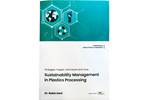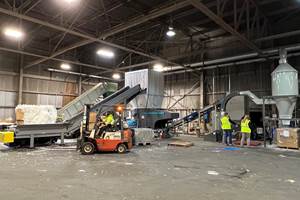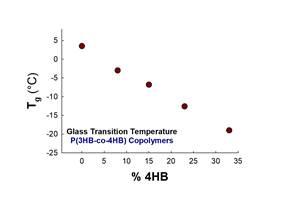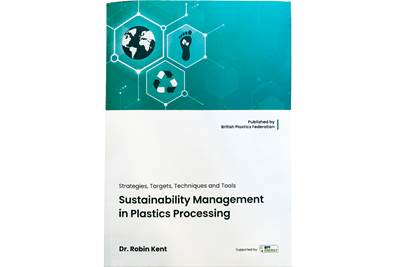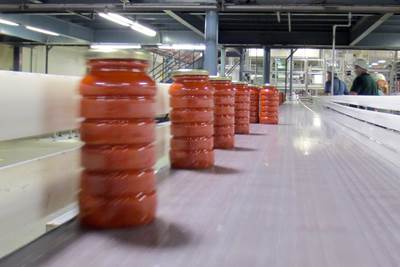Are You Ready for Carbon Footprinting?
Wish you knew more about this method of measuring sustainability? Be careful what you wish for.
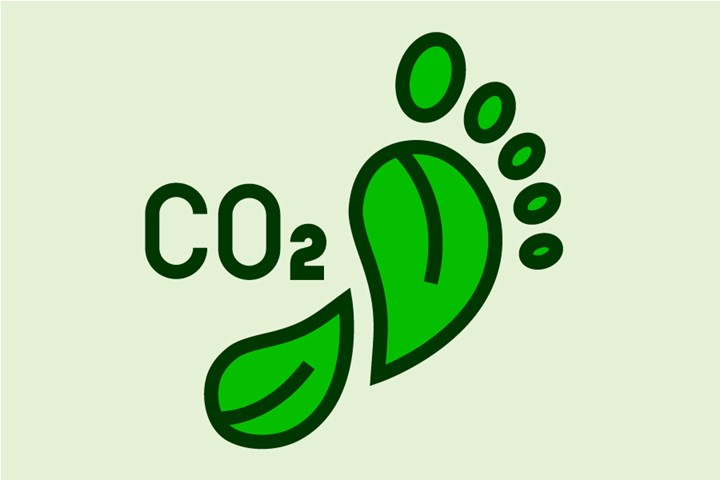
I’ve written here lately about environmental issues for manufacturers, prompted by exploring some chapters of Dr. Robin Kent’s thought-provoking and utilitarian new book, Sustainability Management in Plastics Processing. One additional issue has been rattling around in my mind: How does a plastics manufacturer who wants to be environmentally responsible measure a plant’s or a firm’s progress toward that goal?
One measure of manufacturing sustainability that is gaining currency is the concept of “carbon footprint.” I confess that the phrase always struck me as a bit fuzzy and academic and something they’re more excited about in Europe than here. But it’s getting harder and harder to dodge. Dr. Kent devotes 20 pages to carbon footprinting, so I decided to hold my nose and jump right in with both feet.
As defined by Dr. Kent, “Carbon footprinting is simply a method of quantifying the carbon impact of processes, products and activities in terms of total equivalent CO2 emissions, or CO2e.” I’m troubled by Kent’s use of the words “simply” and “equivalent.” He asserts more than once that “carbon footprinting requires good data collection but is not difficult.” Yet I was ever so slightly overwhelmed by his enumeration of the breadth and depth of that task. So much data to collect! And so much of it not directly measurable by the manufacturer. Which necessitates so many assumptions, so many estimates and approximations—and so much reliance on other sources’ assumptions, estimates and approximations!
Dr. Kent makes a good case that carbon footprinting cannot be safely ignored—or at least not for long: “Carbon footprinting is a technique that is rising in importance around the world and customers are beginning to ask for carbon footprint values as part of the purchasing process. Companies need to be prepared for the now seemingly inevitable question about their carbon footprint.” He adds that this trend is “being driven by increasing numbers of countries around the world that are setting targets to be ‘net zero’ in terms of carbon emissions.”
To start with, there are two basic kinds of carbon footprints. To quote Kent:
• “A product carbon footprint is the total of all the carbon footprints for the complete supply chain (cradle to grave) of a product and includes all the embodied energy of the raw materials.”
• “A site carbon footprint is only for the specific site and does not include any of the embodied energy of the raw materials.”
Dr. Kent assumes that most plastics processors will be concerned mainly with their site carbon footprint, which simplifies things somewhat, but not a whole lot. Some of the carbon emissions that must be cataloged by the processor fall into Scope 1: Direct Emissions. These are the emissions that a site directly causes and controls. These include any fuels used for process or plant heating; use of fuel by owned or leased cars, trucks or other vehicles; process emissions (if any); and refrigerant emissions (replacement of leakage losses).
Kent notes that most plastics processors have little or no direct emissions—except for blowing agents from foam producers. And many sites have chillers, compressed-air dryers and air-conditioning units that use refrigerants, some of which inevitably leak into the atmosphere and require periodic replacement. In both cases, processors must find out the Global Warming Potential of the emitted gases and then convert the emissions to CO2 equivalents.
Next is Scope 2: Indirect Emissions from Imported Utilities. In other words, you must obtain from your electrical utility the kg of CO2e/kWh for its particular mix of generating sources (coal, natural gas, nuclear, hydro, etc.), which you can then multiply by the total kWh purchased, according to your plant’s records.
Finally, there is Scope 3: Indirect Emissions. These are emissions that a site causes to occur but does not own or control the asset producing the emissions—primarily transportation vehicles. These could include employee business travel by air, rail or car; employee commuting between home and work; product transport by contractors (e.g., trucks and air freight); transport and distribution losses by electrical utilities; and well-to-tank losses by fossil-fuel suppliers to the electrical utilities.
Dr. Kent notes that Scope 3 emissions are often not required of plastics processors and therefore are not calculated. “Data for Scope 3 emissions are sometimes difficult to get and the errors can be high.” Fortunately, he adds that Scope 3 emissions account for <10% of total emissions for most plastics processors, so “even large estimation errors will not affect the total emissions greatly.”
Are we having fun yet? If you manufacture a proprietary product, then you may be ripe for product carbon footprinting (PCF), in addition to site carbon footprinting. This can involve determining the energy inputs for the production of all the raw materials and assembled components—plastic and non-plastic—in your product, as well as distribution, use and end-of-life disposal. Some processors may calculate the product carbon footprint on a “cradle-to-gate” basis (ending, in effect, at their shipping dock), rather than cradle to grave, which eliminates several of the factors cited above. Kent says there are more than 20 methods around the world used to measure PCF, though he cites two that he considers the most “robust.”
I found some surprises in Kent’s enumeration of the carbon footprints of several representative plastic products—coffee-cup lid (very short life), food packaging (short life), car part (medium life), and rigid PVC window profile (long-life). For instance, the “use” element of the carbon footprint of the PVC window profile is significant, Kent says: “Windows are ‘appliances’ that use/lose energy throughout their lifetime. In fact, windows use/lose so much energy that the use phase dwarfs the other phases.” Who knew that you, as the window profile manufacturer, had to account for energy losses through that window over its lifetime?
Kent repeats that all this carbon footprinting “is not that difficult and the numbers are relatively easy to either estimate or calculate.” Maybe so, but I wouldn’t want to try to tackle this in my spare time. It sounds like there’s a fair amount of research involved, and Kent recommends three major sources: the GHG (Greenhouse Gas) Protocol, Carbon Disclosure Project, and the British Standards Institute.
Good luck!
Related Content
Purpose-Built System Enhances Capacity and Flexibility for Recycler
A Boston recycler invested in a turnkey shredding, granulation and elutriation system to expand its plastics reclaim business.
Read MoreInside the Florida Recycler Taking on NPE’s 100% Scrap Reuse Goal
Hundreds of tons of demonstration products will be created this week. Commercial Plastics Recycling is striving to recycle ALL of it.
Read MoreHow to Optimize Color Evaluation of Recycled Plastics
The right color measurement instrument and good working methods will minimize variability in color evaluation of PCR.
Read MoreFilm Extrusion: Boost Mechanical Properties and Rate of Composting by Blending Amorphous PHA into PLA
A unique amorphous PHA has been shown to enhance the mechanical performance and accelerate the biodegradation of other compostable polymers PLA in blown film.
Read MoreRead Next
Practical Guide to Sustainability Management
New book aims to help plastics processors set and achieve sustainability goals.
Read MoreSustainability: What Does It Actually Mean?
Is your business adapting—or ready to adapt—to growing calls for sustainability? It would help to know what sustainability really means to those who are pushing for it as a key social, governmental and industrial goal.
Read MoreSteer Clear of Greenwashing
Increasing demand for “environmental responsibility” from manufacturers, coupled with inadequately defined criteria, intensify the temptations to exaggerate claims of sustainability.
Read More

